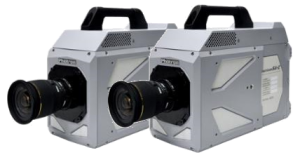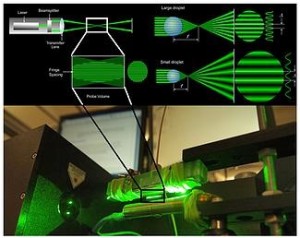Description:
Various Rotating Detonation Engines (RDEs) are being studied alongside commercial and government partners to progress the technology towards a fieldable TRL. Combustion by detonation produces greater efficiencies (Isp) and work than modern isobaric engines. When sustained, RDEs enable a performance leap unrealized in decades of R&D. By entraining a detonation to propagate azimuthally, continuous pressure gain is made available at lower fuel costs than nominal. The transient nature of the detonation phenomenon presents challenges which the UCF RDE group have, and continue to, overcome by characterizing RDEs through ultra-high-speed optical diagnostics, fluidic sensors, computational fluid dynamics, & iterative design.
Current Research Projects:
1. Carbon Rotating Detonation Combustor (CRDC)
2. Rotating Detonation Rocket Engine
3. Liquid Rotating Detonation Rocket Engine
4. Genesis
Current Research Projects:
1. Oblique Detonation Wave Engine
2. HYPER-MAN
3. Solid-Fuel Scramjet
4. Scramjet Ignitor
Description:
The turbulent shock tube (TST) is a 1.5 meter long steel channel with a 45mm square cross section. It is a modular facility designed to investigate turbulent flame acceleration, deflagration to detonation transition, and detonation physics with gaseous and liquid fuels at ambient conditions. The facility houses a turbulence generator comprised of perforated plates to produce optimal conditions in the test section. The test section, containing up to three 45 x 100 mm quartz windows, and 12 pressure transducers, is optimized for a plethora of optical diagnostics, including Schlieren, PIV, and PLIF.
Current Research Projects:
1. Deflagration to Detonation Transition (DDT)
2. National Automated Detonation Facility
Current Research Projects:
1. Stratospheric Aerosol Injection for Global Temperature Control
2. Improving Gas Turbine NOx Emissions with Combustor Axial Staging
3. Investigating Hydrogen Enrichment of Methane-Air Mixtures of Jet-in-Crossflow Flames

Current Research Projects:
1. Turbulent Flame Vortex Dynamics
2. Lean Blowout Dynamics of Bluff-Body Flames
3. Flow Independent Liquid Fuel Injection/Combustion
Description:
The Control Volume Combustion Chamber (CVCC) is a facility that conducts multiphase reaction experiments to replicate the combustion process which occurs within an internal combustion engine. The CVCC investigates direct fuel injection combustion characteristics, specifically emissions, heat release rate, ignition delay, Direct Cetane number, and a local fuel-air distribution map. Past research includes the Co-Optimization of Fuels and Engines initiative (Co-Optima) from the US Department of Energy, which focused on accelerating the introduction of scalable, affordable, and sustainable biofuels for highly efficient burning and low emissions internal combustion engines. Current research investigates the feasibility of ignition assistant devices for environmentally friendly biofuels for next-generation UAV engines.
– High-speed 3D-PIV system (10-50kHz)
– High-speed formaldehyde planar laser induced fluorescence (PLIF, 10-50kHz)
– Two high speed cameras, 21,000-2,100,000 frames per second (Photron SA-Z)
– Structured Light-field focusing system for flame-flow measurements and visualization
– Computer-controlled 3-axis traverse
– Pressure System: 80-channel high-speed pressure scanners
– Hot Wire Anemometer
– Phase Doppler Particle Analyzer (PDPA)
– Intensifier Lens Assembly
– LabView control hardware and software
– Codes: DMD, POD, PIV, Turb, Physics-Based Models (Matlab/Fortran)
– Computational fluid dynamics (OpenFoam, Fluent, Star CCM+)
– High performance computing (STOKES)